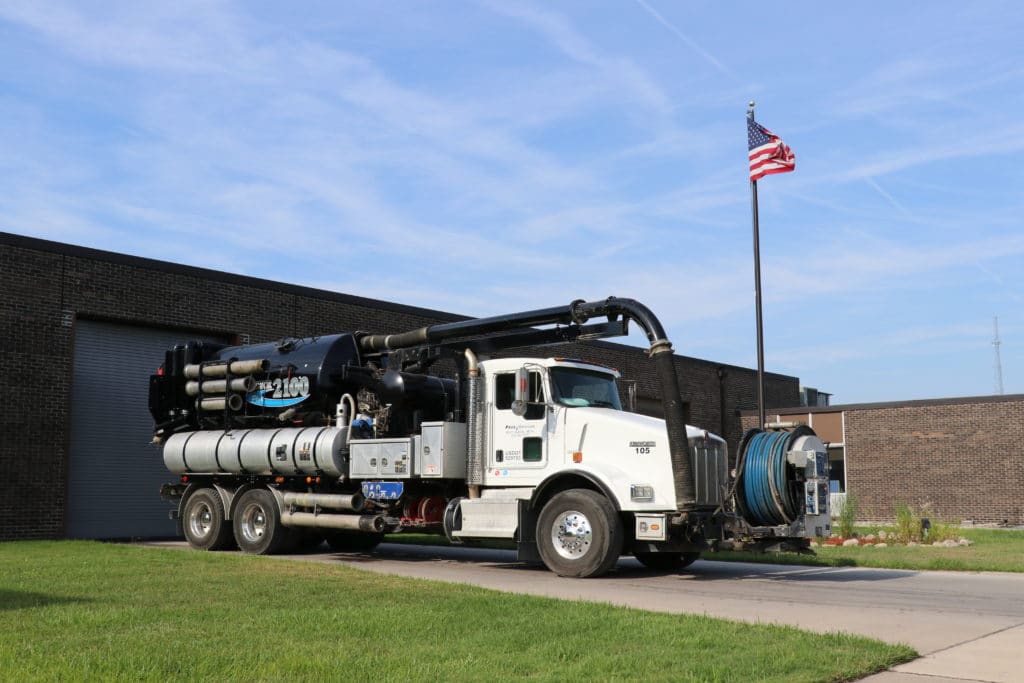Just How Fluid Waste Disposal Works: A Comprehensive Review of Techniques and Technologies Employed

Summary of Liquid Waste Types
The intricacy of fluid waste kinds requires a complete understanding of their qualities and ramifications for disposal. Fluid waste can generally be classified right into a number of types, consisting of industrial, community, farming, and hazardous waste. Each classification exhibits unique properties, requiring certain administration methods to minimize environmental and health risks.
Industrial fluid waste originates from producing processes and commonly consists of a variety of contaminants, such as heavy metals, solvents, and natural substances. Community fluid waste, mainly consisting of wastewater from households and industrial establishments, has raw material, nutrients, and pathogens (industrial wastewater treatment). Agricultural fluid waste, consisting of runoff from farms, may have plant foods, chemicals, and animal waste, posturing dangers to water top quality and ecological communities
Hazardous fluid waste is defined by its poisoning, reactivity, or potential to cause damage. Comprehending these diverse liquid waste kinds is critical for creating effective disposal methods and ensuring compliance with environmental laws.
Physical Therapy Methods

Screening is the initial action, where bigger fragments and debris are removed from the fluid waste making use of displays or grates. This procedure protects downstream devices from damage and ensures smoother operation. Complying with testing, sedimentation makes use of gravitational pressure to different solids from liquids. In sedimentation storage tanks, heavier particles resolve near the bottom, creating a sludge layer, while the made clear fluid can be additional dealt with.
Purification is an additional important method that includes passing the fluid via porous products, such as sand or membrane layers, to catch smaller fragments. This action improves the top quality of the liquid, making it ideal for subsequent treatment procedures.

Chemical Treatment Techniques
Chemical therapy methods are vital for successfully handling liquid waste, particularly in attending to dissolved and colloidal impurities that physical methods might not appropriately remove. These techniques utilize numerous chemical agents to neutralize, speed up, or change harmful substances into much less unsafe types.
One common method is coagulation and flocculation, where chemicals such as alum or ferric chloride are included in advertise the aggregation of suspended bits. This process enhances sedimentation, enabling for easier elimination of the resulting sludge. Additionally, oxidation procedures, employing representatives like chlorine or ozone, are used to break down intricate natural substances and virus, rendering the waste safer for discharge or more treatment.
Neutralization is one more important method, which adjusts the pH of acidic or alkaline waste streams to neutral levels, protecting against try this possible harm to downstream systems and the environment. Additionally, progressed oxidation processes (AOPs) utilize mixes of oxidants and ultraviolet light to degrade persistent pollutants, attaining a higher degree of therapy performance.
Biological Treatment Procedures
Organic treatment processes play a critical function in the monitoring of fluid waste by using microbes to decompose raw material and decrease contaminant degrees. These procedures can be extensively classified into cardiovascular and anaerobic treatments, each utilizing particular microbial neighborhoods to achieve reliable waste degradation.
Aerobic therapy includes making use of oxygen to assist in the failure of organic products by microorganisms. This procedure is commonly carried out in turned on sludge systems, where oygenation storage tanks offer a helpful setting for microbial development, bring about the oxidation of organic contaminants. The resultant biomass can be separated from treated effluent through sedimentation.
On the other hand, anaerobic treatment occurs in the absence of oxygen, counting on various bacteria to damage down organic matter. This method is particularly advantageous for high-strength waste, as it generates biogas, a renewable power resource, while reducing sludge production. Technologies such as anaerobic digesters are regularly used in industrial and community applications.
Both anaerobic and aerobic organic treatments not just reduce the environmental effect of liquid waste but also assist in source healing, making them important parts of lasting waste pop over to this web-site management techniques. Their effectiveness, adaptability, and performance sustain their extensive application throughout different industries.
Arising Technologies in Disposal
Innovative techniques to liquid garbage disposal are quickly developing, driven by improvements in innovation and an enhancing focus on sustainability. Amongst these arising modern technologies, membrane bioreactors (MBRs) have actually gained traction for their ability to combine organic treatment with membrane layer filtration, leading to premium effluent that can be reused in different applications. MBRs make it possible for smaller impacts and extra efficient operations compared to conventional systems.
An additional promising advancement is the use of anaerobic food digestion integrated with nutrient healing modern technologies, which not only deals with liquid waste but likewise generates biogas and recuperates important nutrients like nitrogen and phosphorus. This dual benefit boosts resource efficiency and reduces environmental effect.
Furthermore, advanced oxidation processes (AOPs) are being adopted for the degradation of complex organic toxins. These methods use powerful oxidants and stimulants to damage down impurities at the molecular degree, providing an extremely reliable option for difficult waste streams.
Furthermore, the combination of expert system and maker discovering in waste management systems is enhancing functional performance and anticipating upkeep, leading to lowered costs and boosted environmental conformity. These technologies mirror a substantial change towards more reliable and lasting liquid waste disposal practices.
Conclusion
In verdict, effective fluid waste disposal requires a detailed understanding of various methods and modern technologies. By continually progressing these methods, it becomes possible to deal with the growing obstacles linked with liquid waste, eventually adding to ecological defense and source recuperation.
Fluid waste disposal is an important element of environmental monitoring, needing a detailed understanding of different methods and technologies customized to various waste types. Fluid waste can generally be categorized right into several types, including industrial, metropolitan, agricultural, and hazardous about his waste. Agricultural liquid waste, including overflow from farms, may consist of fertilizers, pesticides, and animal waste, posturing risks to water high quality and ecosystems.
Various physical therapy approaches play a vital role in handling fluid waste efficiently - industrial wastewater treatment.In conclusion, reliable fluid waste disposal demands an extensive understanding of different strategies and innovations